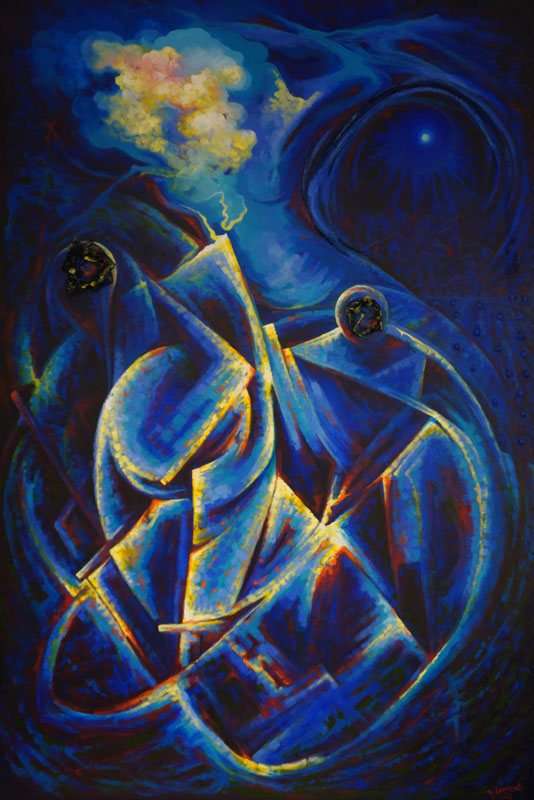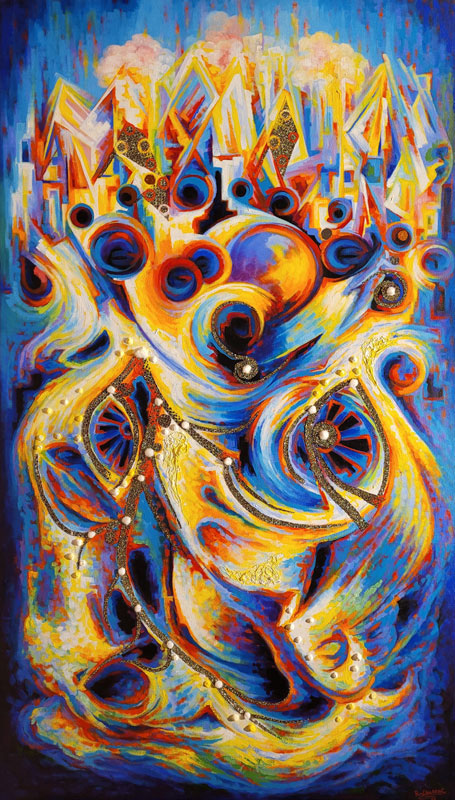My main subject is communication: whether it’s a dialogue between the materials I choose to work with and the subject matter of the painting itself; a dialogue among the shapes, colours, shadows, and light that I paint; the ongoing dialogue between the different collections of my work as I change and develop as an artist; or the various exchanges that occur between my paintings and the diverse spectators who confront, encounter, and ponder my work.
Always hoping to encourage these different forms of communication, I try to make each of my paintings at once an alluring and complex topic of conversation. So, for example, my paintings will broach elusive, contested, and personal topics such as “memory”, “resistance” and “spirituality”. My paintings try to invite a viewer’s take on the multiplicity of their meanings.
Very early on in my career as an artist, I turned to my roots, the ancestral past of my country, Haiti, to enrich my artistic vision by drawing inspiration from the tangible and intangible aspects of Haiti’s heritage. Because Haiti has a strong sense of history and heritage that travels and inspires beyond its own national borders, my collaboration with the Ruth J. Simmons Center for the Study of Slavery and Justice feels not only quite sensible but also destined to happen. The collaboration helped bring into stark relief my desire to think seriously and creatively about slavery, its aftermath, and ever-pulsating movements for justice across Africa and the African diaspora. How do you capture captivity? Indeed, how do you capture liberation? In whatever way one chooses, one must talk with my paintings in order to find those complicated answers for oneself.
I use different materials, classic and unconventional. By “unconventional,” I allude to a very specific technique in which I deploy mixed media, including, but not limited to, fabric, charcoal, resin, and sometimes even coffee grounds. Depending on the context in which I am working, I will favor certain materials over others. For example, for this exhibition, I use acrylic paint and recovered pieces of fabric to create a painting in relief and to think about recovery as a form of repair and justice work. By “recovery”, I mean how I reuse and ultimately transform these materials whose introduction on to the can- vas always brings the eye to a centre of interest. Through my superimpositions of layers of colours, shapes, and brushstrokes, I try to create a luminous and spiritual image as a symbol of hope.
In Marooning, when the slave snatches his freedom, I try to place particular emphasis on Marronage as a living testimony to the enslaved’s ability to escape dehumanization, and the pedagogy of terror that aims to shatter all hope for freedom. I imagine the enslaved settling in a community in a region far from the slave society and rediscovering his ancestral traditions. I imagine, too, the enslaved travelling in his own internal universe to recharge, find energy, hope, and to formulate a strategic response to oppression. Overall, I try to offer a spiritual vision of the resistance strategies of the enslaved in their long walks toward freedom.


